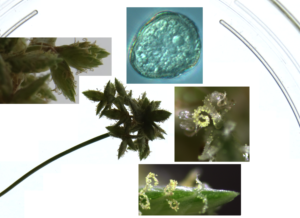
York University Plant Growth Facility
(Greenhouse@York)
Welcome
 The Greenhouse is connected to Farquharson Building
at its east end, and can be entered from the north or from inside Farquharson.
The Greenhouse is connected to Farquharson Building
at its east end, and can be entered from the north or from inside Farquharson.Visitors are welcome! It's best to contact the Greenhouse Attendant --
Announcements
27 February 2015: Pineapple Flower Buds. An orphan pineapple that found a new home in the greenhouse is producing
an inflorescence. Each bract develops into a single flower (and eventually fruit section).
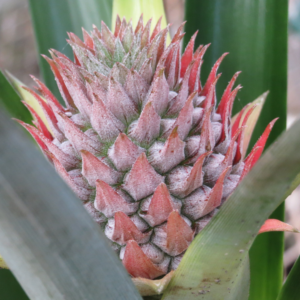
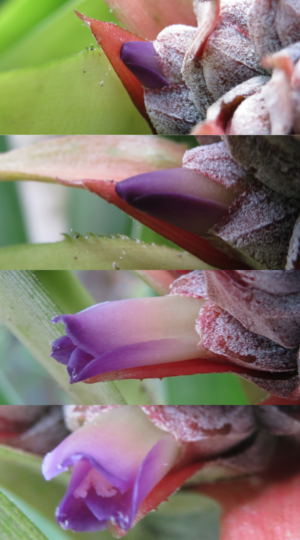
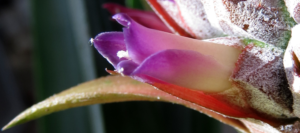
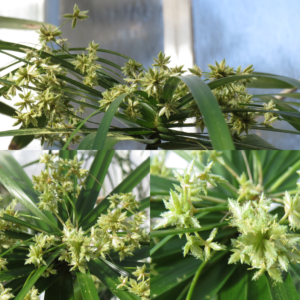 14 February 2015: Cyperus alternifolius (Umbrella Sedge) Flowers. The flowers are
small, but put on a show for Valentine's Day anyway.
14 February 2015: Cyperus alternifolius (Umbrella Sedge) Flowers. The flowers are
small, but put on a show for Valentine's Day anyway.
11 February 2015: Steam Shutdown. When the steam supply is shutdown in the middle of the winter,
things can get interesting. It happened at about 8:00 AM. The backup boiler wasn't working, so we watched the temperatures drop, by about 3-6 Celsius an hour.
Greenhouse-grown plants are not cold-hardy. We are not sure of the 'death-point', probably 5-8 Celsius depending on the
species. So, things got a little tense. Luckily, the boiler was fixed within three hours, and steam supply returned soon
thereafter.
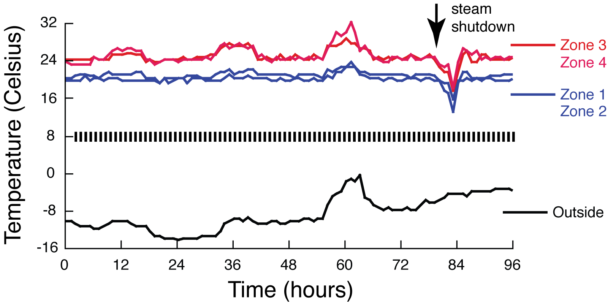
23 January 2015: Lily Flowers. Lily bulbs from ecology experiments in the fall got re-potted, and some have flowered!

10 January 2015: Elodea. Sometimes we grow unusual plants, like the common aquatic weed, Elodea. We need to
maintain cultures for teaching labs, and what better place to grow it than a greenhouse? After all, it is a flowering plant!
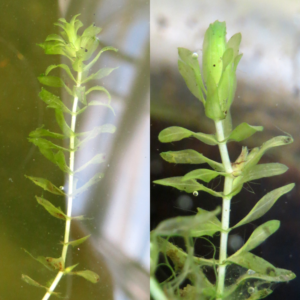
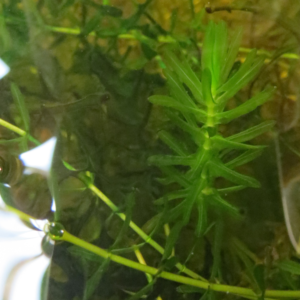
27 November 2014: Amaryllis Flower. It took three years of patience, which finally culminated in flowers.
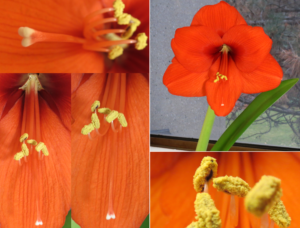
20 September 2014: Passion Flower. The blossom is simply astonishing.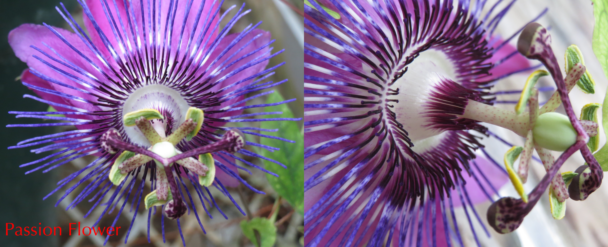
13 September 2014: Cactus Flowers! First Time Ever!
The greenhouse attendant Glen Marlok gave me a heads-up. The flower bud was there Friday afternoon, and in full bloom Saturday morning.
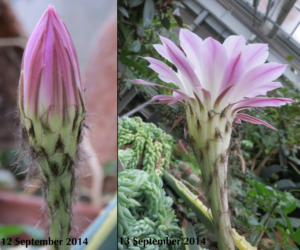
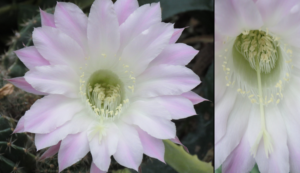
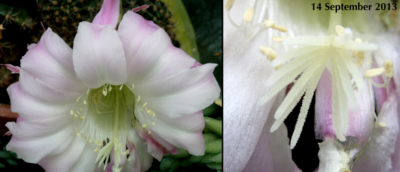 By Sunday morning, the blossom is already starting to senesce. Some of the rips in the petals could be because of small rodents climbing into the flower
(the recumbent stigma suggests rodents or even bats are possible natural pollinators).
By Sunday morning, the blossom is already starting to senesce. Some of the rips in the petals could be because of small rodents climbing into the flower
(the recumbent stigma suggests rodents or even bats are possible natural pollinators).
14 August 2014: Turnera Flowers!
It seemed like a good time of year to show some of the Turnera flowers. They like it hot! So, it was a good excuse to
escape a chilly August day and go into the Turnera greenhouse zones and take some photos!
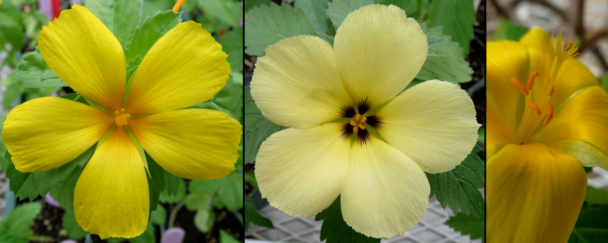
16 March 2014: C-Fern Babies!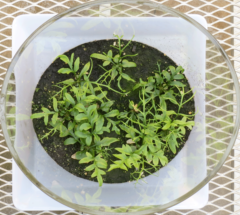 We have been growing C-Ferns (Ceratopteris richardii) in the greenhouse in preparation for Science Rendezvous in May. After a
month, they are half-way to maturity.
We have been growing C-Ferns (Ceratopteris richardii) in the greenhouse in preparation for Science Rendezvous in May. After a
month, they are half-way to maturity.
13 February 2014: C-Fern Babies!
We have been growing C-Ferns (Ceratopteris richardii) in the greenhouse in preparation for Science Rendezvous in May. Here are
more details about the event.
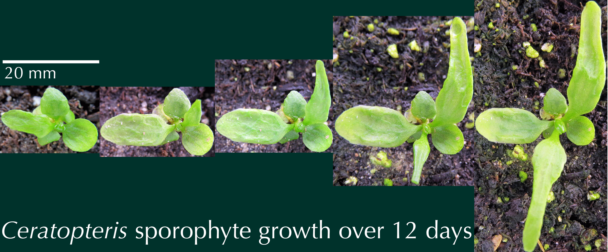
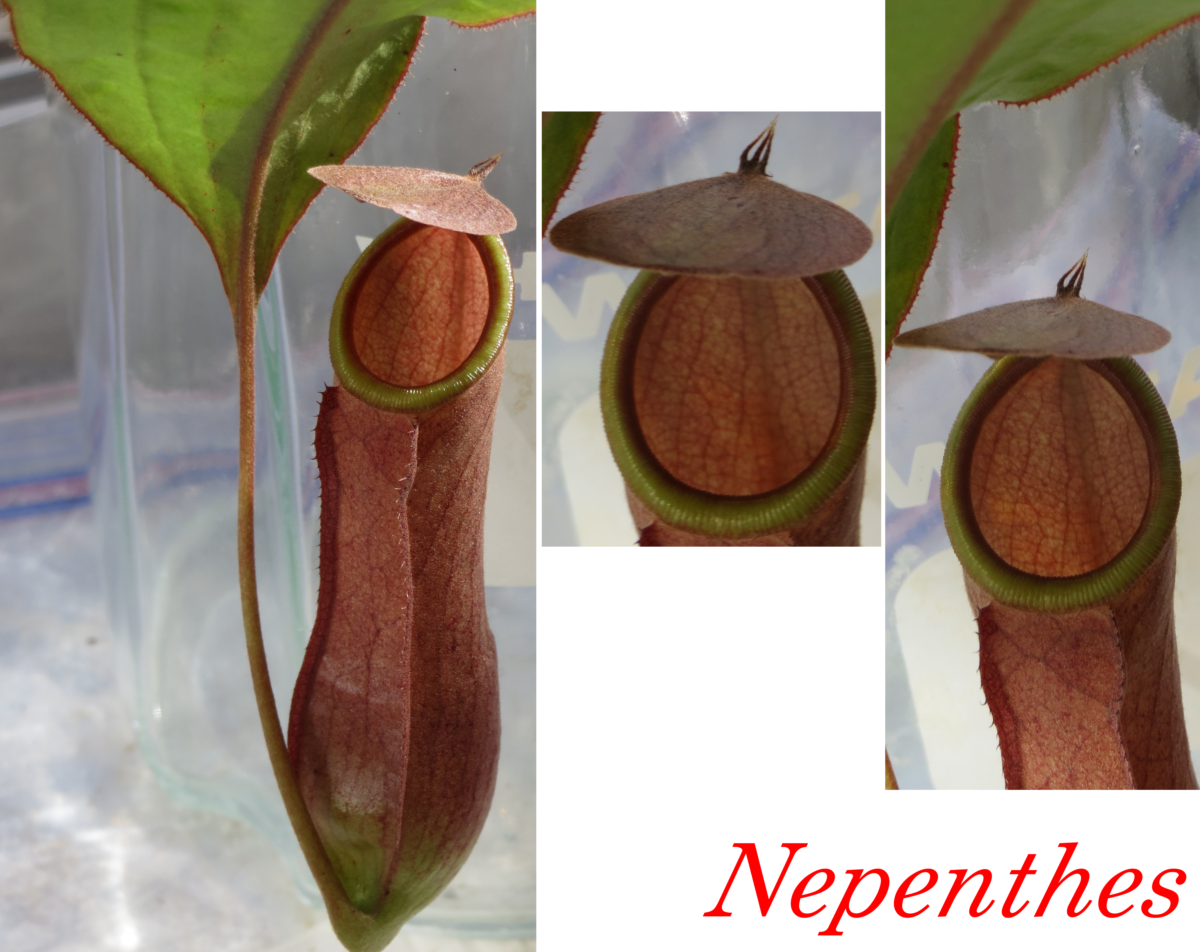 3 November 2013: Nepenthes. (Could it be for BioControl of greenhouse insects?)
3 November 2013: Nepenthes. (Could it be for BioControl of greenhouse insects?)
19 June 2013: East Asian Lilies Bloom!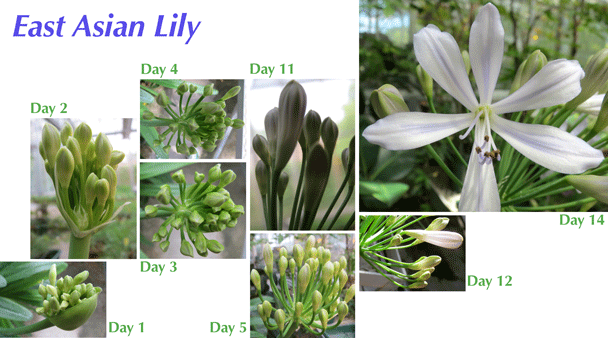
28 May 2013: More Greenhouse Flowers!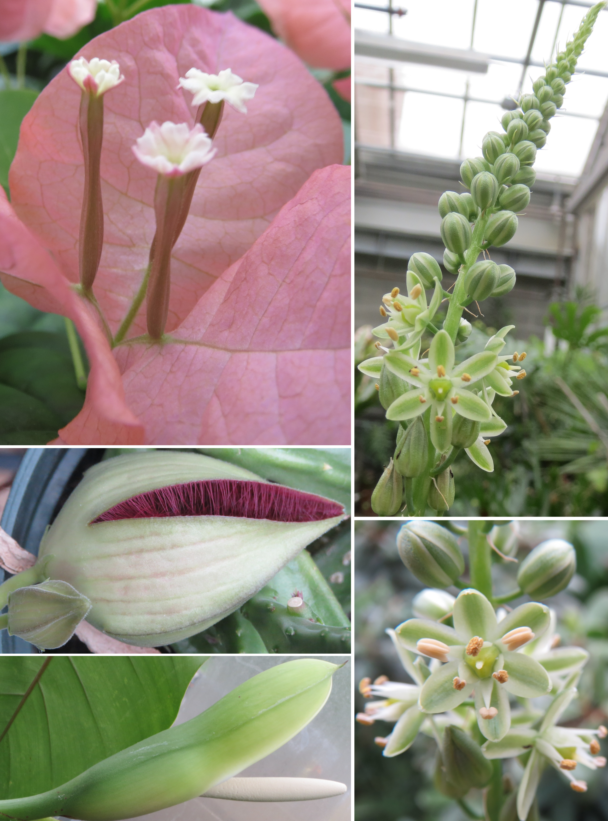
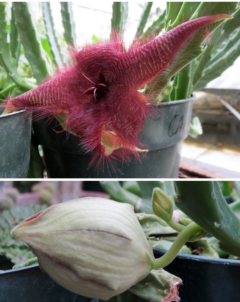 11--24 April 2013: Flowering Cactus!
It's uncommon for the cactuses to bloom, here is the rare exception!
11--24 April 2013: Flowering Cactus!
It's uncommon for the cactuses to bloom, here is the rare exception!

 19 December 2012: Budding Orchid!
Orchid buds have started to bolt (left), flowers soon to follow..... (right, 26 December 2012)
19 December 2012: Budding Orchid!
Orchid buds have started to bolt (left), flowers soon to follow..... (right, 26 December 2012)
 and now have flowered! (right, 29 December 2012)
and now have flowered! (right, 29 December 2012)
 (right-hand click to view larger images)
(right-hand click to view larger images)
After asking around, it turns out our mystery orchid is Ludisia discolor (the jewel orchid, popular for its dark and velvety leaves).
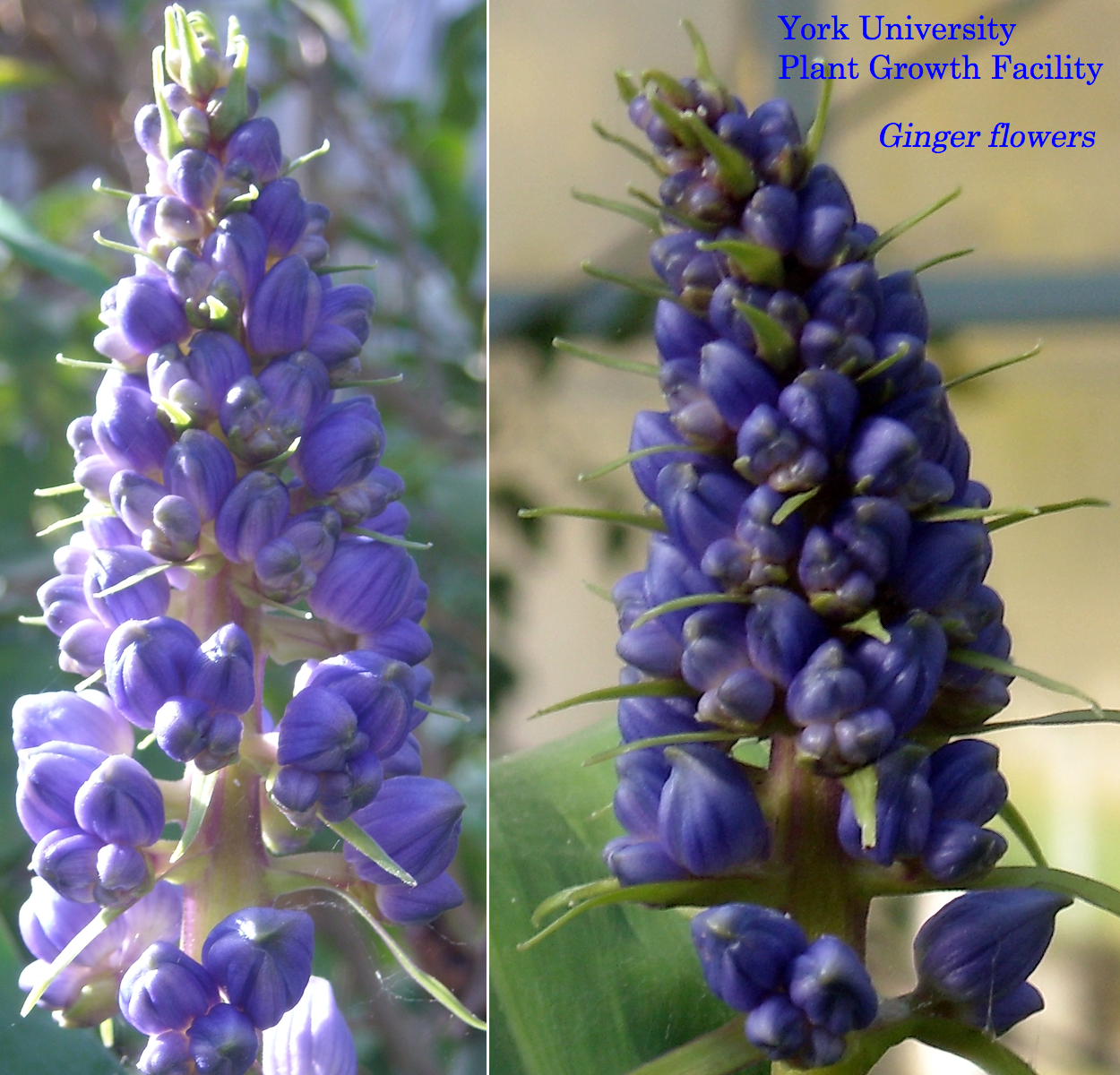 10 October 2012: Blue Ginger Blooms!
Spike inflorescences of blue ginger (Dichorisandra thyrsiflora) appeared over the weekend, providing a regal purple in the teaching zone of the
greenhouse to complement the pale blue of Tradescantia.
10 October 2012: Blue Ginger Blooms!
Spike inflorescences of blue ginger (Dichorisandra thyrsiflora) appeared over the weekend, providing a regal purple in the teaching zone of the
greenhouse to complement the pale blue of Tradescantia.
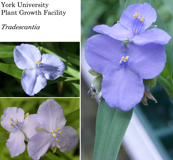 16 September 2012: Tradescantia Blooms!
It's not really all that rare, but Tradescantia is beautiful and worth a photo!
16 September 2012: Tradescantia Blooms!
It's not really all that rare, but Tradescantia is beautiful and worth a photo!
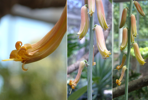 6 August 2012: Aloe Blooms!
A spike inflorescence of aloe appeared about 2 weeks ago, with the basal flowers now reaching maturity.
6 August 2012: Aloe Blooms!
A spike inflorescence of aloe appeared about 2 weeks ago, with the basal flowers now reaching maturity.
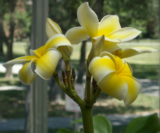 30 June 2012: More Flowers Bloom!.
Philodendrons aren't the only recent surprise. Here's another rare bloomer: Plumeria
30 June 2012: More Flowers Bloom!.
Philodendrons aren't the only recent surprise. Here's another rare bloomer: Plumeria
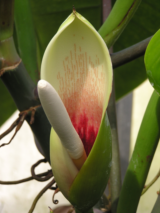 24 May 2012: Philodendron Blooms!.
It's a rare event to have the Philodendrons bloom, showing off their stunning colors. You can find out more about Philodendrons
on Wikipedia. The flowers form on the spike-shaped structure (the
spadix). This photo was taken by Mike Belanger on Wednesday 18 April.
24 May 2012: Philodendron Blooms!.
It's a rare event to have the Philodendrons bloom, showing off their stunning colors. You can find out more about Philodendrons
on Wikipedia. The flowers form on the spike-shaped structure (the
spadix). This photo was taken by Mike Belanger on Wednesday 18 April.
About the Greenhouse
 The Greenhouse (or, more formally the Plant Growth Facility) is
a multi-user facility that supports teaching and research at York University. It's mostly research on plants (ecophysiology
and evolution), but York's scientists also use the facility for research on insects, or to prepare compounds for biomedical research.
The Greenhouse (or, more formally the Plant Growth Facility) is
a multi-user facility that supports teaching and research at York University. It's mostly research on plants (ecophysiology
and evolution), but York's scientists also use the facility for research on insects, or to prepare compounds for biomedical research.
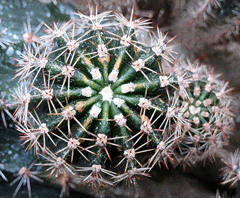 Plants used for teaching demonstrations are grown and maintained in the greenhouse.
This allows York's students to work with growing material, and, possibly (for the cacti collection), to experience first-hand examples
of plant defenses against inquisitive humans (and other animals)!
Plants used for teaching demonstrations are grown and maintained in the greenhouse.
This allows York's students to work with growing material, and, possibly (for the cacti collection), to experience first-hand examples
of plant defenses against inquisitive humans (and other animals)!
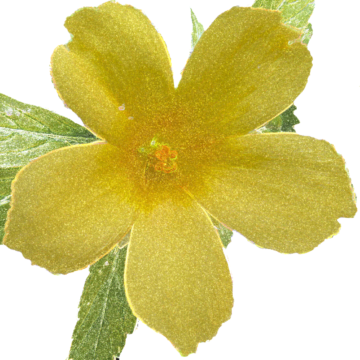 The Greenhouse is separated into four zones, each with a controlled environment. Turnera plants
like it hot. The plants are used to understand the evolution of species and mating strategies.
The Greenhouse is separated into four zones, each with a controlled environment. Turnera plants
like it hot. The plants are used to understand the evolution of species and mating strategies.
 Lighting has to be supplemented for optimal growth of the sub-tropical Turnera. The yellow
color of the light is because high pressure sodium lamps are used to maximize light intensity during the Canadian winter nights.
Lighting has to be supplemented for optimal growth of the sub-tropical Turnera. The yellow
color of the light is because high pressure sodium lamps are used to maximize light intensity during the Canadian winter nights.
Some plants are used to produce compounds of interest to researchers, such as anti-virals from Phytolacca (Pokeweed).
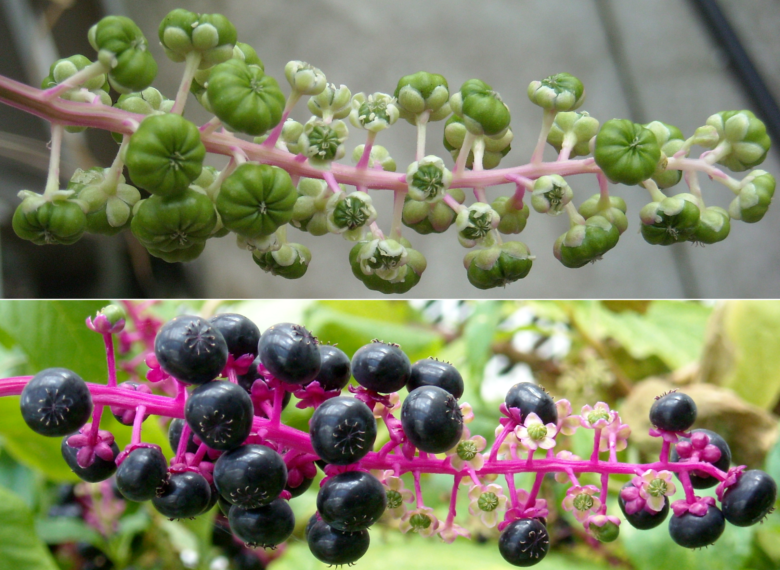
The plant growth facility was constructed in 2002, and opened to visitors in a 2003 Open House. Please drop in and see it for yourself!
Contact Information
If you have any questions about the Greenhouse Facility, you can call the Greenhouse Attendant, Glen Marlok
Office and greenhouse: (416) 736-2100 ext 22307
Environmental Data
Here are the temperatures and relative humidities for the four zones (from mid-2010 to 30 July 2013) [txt]
Here are the temperatures and relative humidities for the four zones (from 18 October 2013 to 12 August 2014) [txt]
Here are the temperatures and relative humidities for the four zones (from 1 August 2014 to 31 December 2014) [txt]
